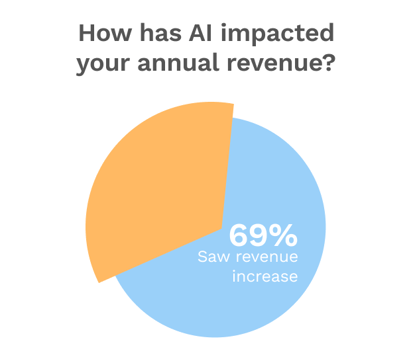Why AI Competitor Analysis is a Must-Have Tool for Retail Success
Why AI Competitor Analysis is a Must-Have Tool for Retail Success
Retailers today face relentless competition, where staying informed about market shifts can shape success. Traditional competitor analysis methods often fall short, leaving gaps that can lead to missed opportunities.
AI tools now offer a breakthrough, providing retailers with real-time, actionable insights that manual approaches cannot match. For retailers focused on growth, AI-driven competitor analysis has become an essential strategy for sustaining momentum and achieving a competitive edge.
Quick Takeaways
- AI tools provide real-time, actionable insights, empowering retailers to make informed, data-driven decisions.
- Predictive analytics in AI tools enable retailers to anticipate trends and adjust strategies proactively.
- Automated data collection and reporting reduce manual effort, improving efficiency and minimizing errors.
- Dynamic pricing and inventory planning tools allow retailers to respond quickly to market changes, optimizing revenue and stock control.
Why Traditional Competitor Analysis Falls Short in Today’s Retail Environment
Traditional competitor analysis methods, such as manual data gathering and static reporting, often struggle to deliver the speed and precision needed. Retailers relying on manual analysis frequently face delays that make actionable insights obsolete by the time they’re available. Limited data and delayed reporting lead to missed market shifts, leaving retailers unable to react promptly to competitor price changes or emerging trends.
AI-powered competitor analysis, however, transforms these limitations by delivering instant access to comprehensive data. With AI, retailers gain a continuous flow of market intelligence that allows them to act proactively, moving from lagging behind to leading within their markets.
Key Benefits of AI Tools in Competitor Analysis for Retail Success
Real-Time Market Insights
AI tools provide real-time data on competitors’ pricing, promotions, and product availability. Access to current data enables retailers to respond immediately to market shifts and adapt strategies to maintain relevancy and appeal.
Enhanced Decision-Making
AI tools empower retailers to make informed decisions based on accurate, up-to-the-minute information. By leveraging real-time data for strategies such as pricing, product placement, and inventory, retailers can optimize outcomes and significantly reduce guesswork.
This impact is evident among retailers currently using AI, where 69% report an increase in annual revenue, with 28% experiencing growth between 5% and 15% thanks to AI’s ability to improve decision-making and strategic alignment.

Proactive Trend Identification
AI-powered tools identify emerging consumer trends by analyzing purchasing patterns and predicting shifts in demand. This trend analysis allows retailers to anticipate customer needs and act ahead of competitors.
Operational Efficiency
Automating competitor analysis through AI tools not only reduces time and resource demands but also minimizes errors. AI streamlines data collection, filtering, and analysis, providing retailers with reliable insights without the manual effort required by traditional methods.
Essential Features to Look for in AI-Powered Competitor Analysis Tools
AI tools are particularly beneficial for larger retailers, who often need robust systems to handle high volumes of competitor data and make dynamic adjustments. As proof of AI’s value, 64% of larger retailers (with revenues over $500 million) currently leverage AI, a figure that outpaces industry averages by 55%, while another 22% are in the pilot or assessment phase.

For these businesses, features like real-time data collection, predictive analytics, and dynamic pricing capabilities are not just beneficial—they’re essential for maintaining market leadership and agility.
1. Automated Data Collection and Reporting
AI tools streamline the competitor analysis process by automating data collection, eliminating the need for manual research. This feature provides retailers with consistent, up-to-date insights and reduces the risk of oversight or error. Automated reporting further ensures that key data reaches decision-makers promptly, facilitating informed and timely actions.
2. Predictive and Prescriptive Analytics
Beyond analyzing current trends, AI tools can predict future market shifts and provide actionable recommendations. Predictive analytics enables retailers to anticipate changes in customer behavior, while prescriptive insights suggest practical responses to these shifts. These capabilities help businesses adjust pricing strategies, product offerings, and inventory levels proactively.
3. Customizable Dashboards and Visualization Options
User-friendly, customizable dashboards allow retailers to visualize data in ways that are relevant to their specific needs. Advanced visualization options enhance understanding and help decision-makers identify patterns and insights at a glance, transforming complex data into digestible information that guides strategy.
4. Dynamic Pricing Intelligence
AI competitor analysis tools include dynamic pricing intelligence, enabling retailers to adjust prices in real time based on competitor actions, inventory levels, and demand patterns. This feature helps maximize revenue opportunities while keeping pricing competitive and aligned with market conditions.
Practical Applications of AI Competitor Analysis in Retail
1. Competitive Pricing Adjustments
AI tools allow retailers to monitor competitor pricing in real time, empowering them to adjust prices dynamically. This capability helps retailers maintain competitive pricing without sacrificing profitability, ensuring they can respond to market changes quickly and strategically.
2. Inventory Planning and Optimization
By analyzing competitor stock levels and demand trends, AI tools support efficient inventory planning. Retailers can make informed decisions on stock replenishment, helping to avoid both overstock and stockouts. This proactive approach enhances inventory control, reducing waste and optimizing storage costs.
3. Seasonal and Trend-Based Adjustments
AI competitor analysis tools enable retailers to identify seasonal trends and make timely adjustments to product offerings and marketing strategies. This helps retailers capitalize on peak seasons and quickly adapt to changing consumer preferences, boosting their market responsiveness and relevance.
4. Brand Positioning and Market Strategy
With comprehensive insights into competitor strategies, AI-driven analysis supports retailers in refining their brand positioning and market strategy. By understanding where competitors are gaining traction and which tactics are effective, retailers can make strategic adjustments to differentiate themselves and strengthen their market presence.
Leveraging AI for a Competitive Edge Today with Hypersonix
AI-driven competitor analysis has become an essential tool for retailers seeking to stay ahead. With capabilities like real-time insights, predictive analytics, and dynamic pricing, AI tools empower businesses to make informed, proactive decisions. Embracing these technologies ensures retailers can respond swiftly to market changes and optimize operations. Read more about ProfitGPT.
Explore how AI-driven competitor analysis can empower your retail strategy with real-time insights and predictive capabilities. Book a demo today to see how Hypersonix’s solutions can enhance your competitive edge!


.png)



